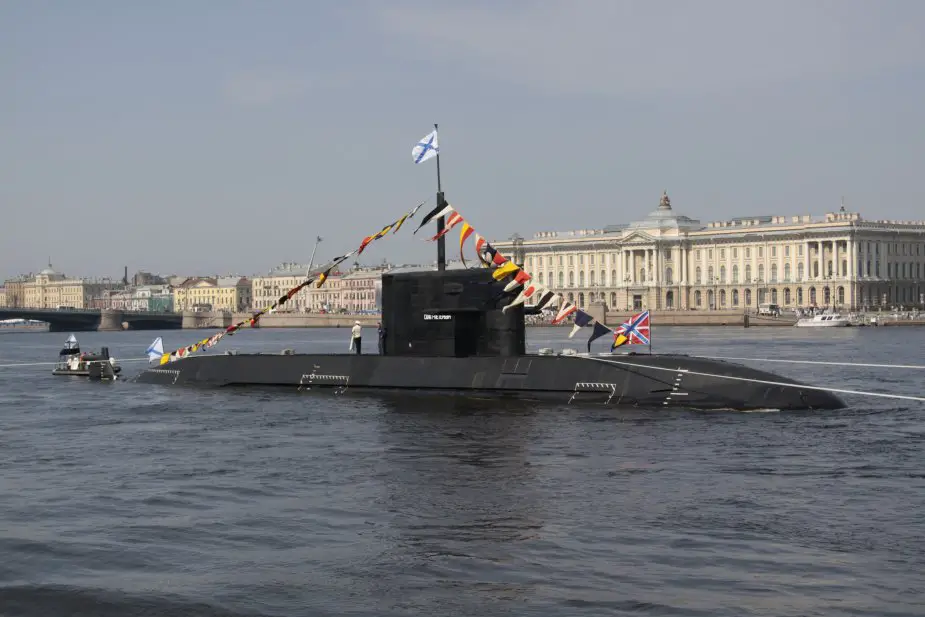Analysis: St. Petersburg submarine expects upgrade for new arms trials - take 1
The St. Petersburg B-585 Lada-class diesel-electric submarine of project 677 is undergoing test operation and sailed out of Severomorsk to Kronshtadt for scheduled maintenance and upgrade, the Northern fleet said in early April. The sailing of the most noiseless submarine to the Baltic Sea will weaken the defense of Northern fleet SSBN when they sail out to the World Ocean and return back home, the Independent Military Review writes.
 The St. Petersburg B-585 Lada-class diesel-electric submarine (Picture source: Black Leon at ru.wikipedia)
The St. Petersburg B-585 Lada-class diesel-electric submarine (Picture source: Black Leon at ru.wikipedia)
The powerful SSBN need protection against foreign SSN often waiting for them at approaches to the bases where the chance to detect the SSBN is high. If the adversary succeeds, it will tail the submarine, register its acoustic portrait and attack, if an order comes.
Brown-water forces have to prevent such a scenario. The remaining project 877 diesel-electric submarines in the Northern fleet can cope with the mission not that effectively as the St. Petersburg which is much more noiseless and has better acoustic tools. The St. Petersburg is equipped with Lira GAK L-01 sonar of Electropribor Institute with a large quasiconformal hydrophone antenna and a towed acoustic antenna. They surpass all serial sonars of Rubicon MGK-400 family installed in submarine projects 636 and 877.
It remains to hope that the Kronshtadt submarine will soon sail to the north. It is the second sub of project 677 built by the Admiralty Shipyard. It is undergoing factory trials at present. The construction of the Velikie Luki third submarine is nearing completion. A pair of other submarines is to be laid in 2021-2023. The commissioning time is 2020-2021 and 2025-2027 respectively. Anyway, there are few project 677 submarines in the Russian Navy today and in foreseeable future which demands to prudently distribute available resources.
Like the Kronshtadt, the St. Petersburg is undergoing the first stage of trials in the Baltic Sea. Baltic fleet warships and previous generation diesel-electric submarines of project 877 built for the Russian Navy and 636.1 for foreign countries operated against it at exercises. The unique sonar and a small size helped the St. Petersburg to detect the adversary first and escape a clash or occupy an advantageous position for attack.
In the summer of 2013, the St. Petersburg sailed to the North for trials in the deep waters of the Barents and the White Seas. The submarine properly operated against the potential adversary. It detected a US Virginia-class SSN, remained unnoticed and followed it for several hours. It issued a signal and compelled the foreign submarine to leave the route of Russian SSBN.
It was a repletion of the experience of the lead diesel-electric submarine of project 877 of the Pacific fleet. It detected and tracked US Los Angeles-class SSN in the first sortie.
Russian diesel-electric submarines have numerously proved their value of an important naval component. They are the best tool of the Navy to counter NATO nuclear submarines deployed along the perimeter of Russian sea borders.
© Copyright 2020 TASS. All rights reserved. This material may not be published, broadcast, rewritten or redistributed.


























